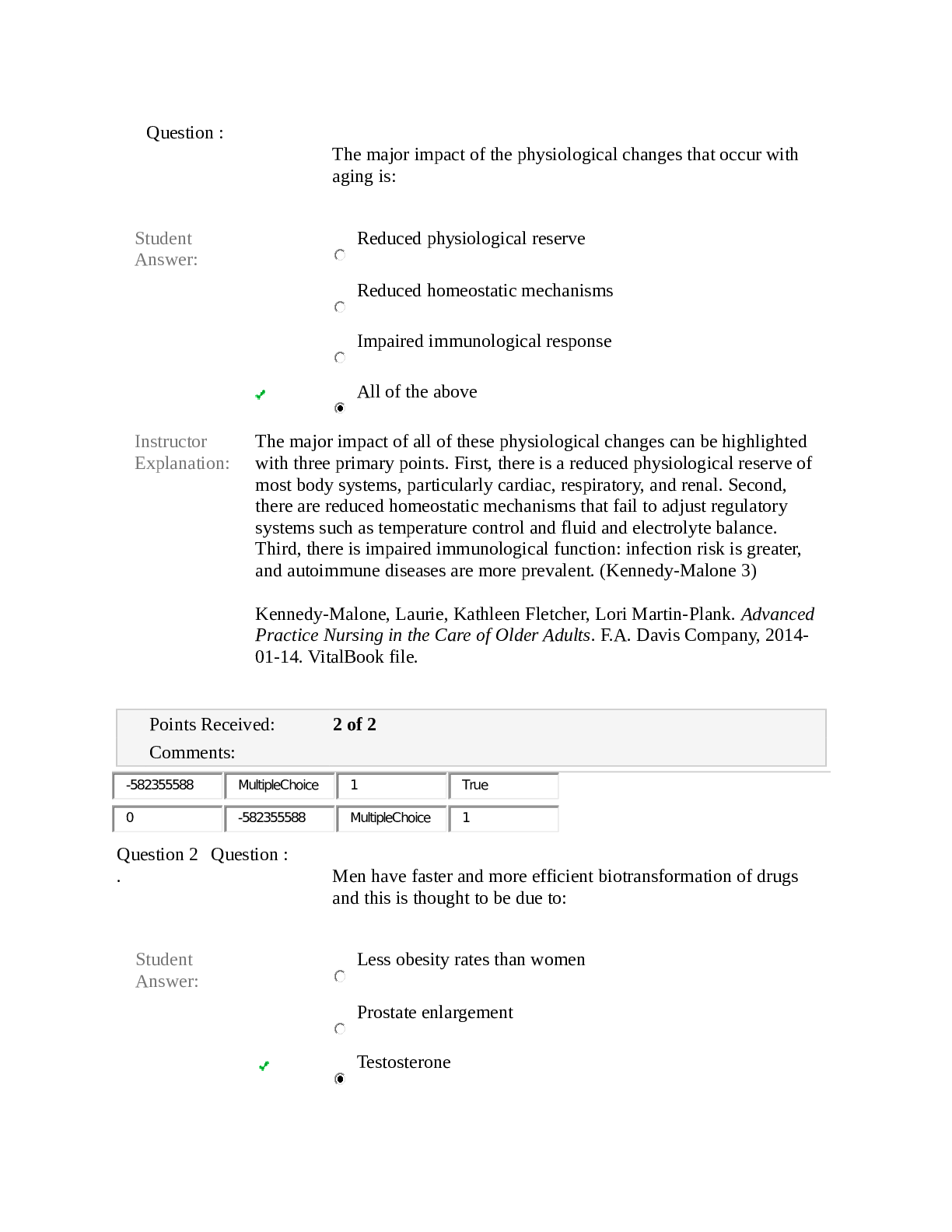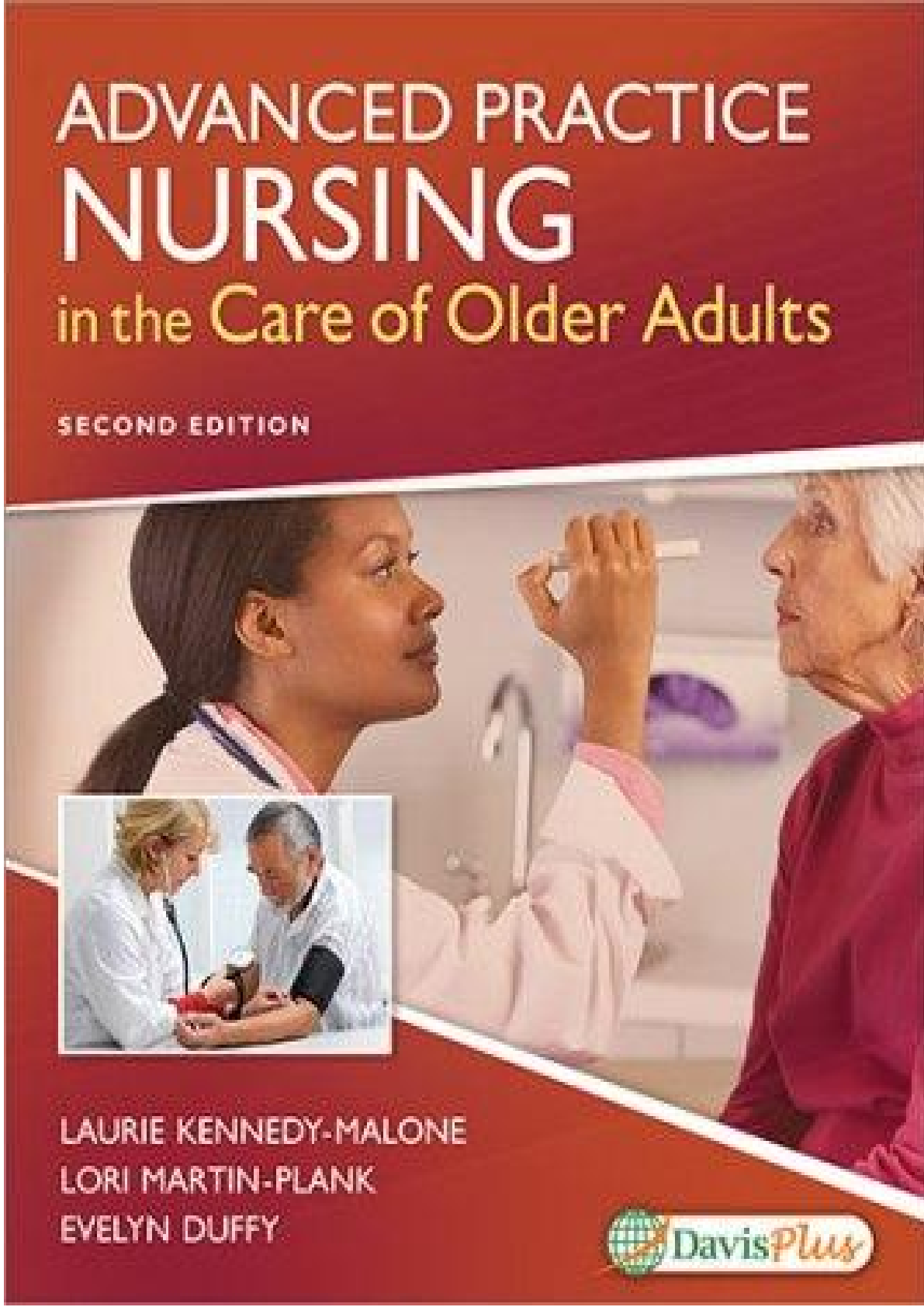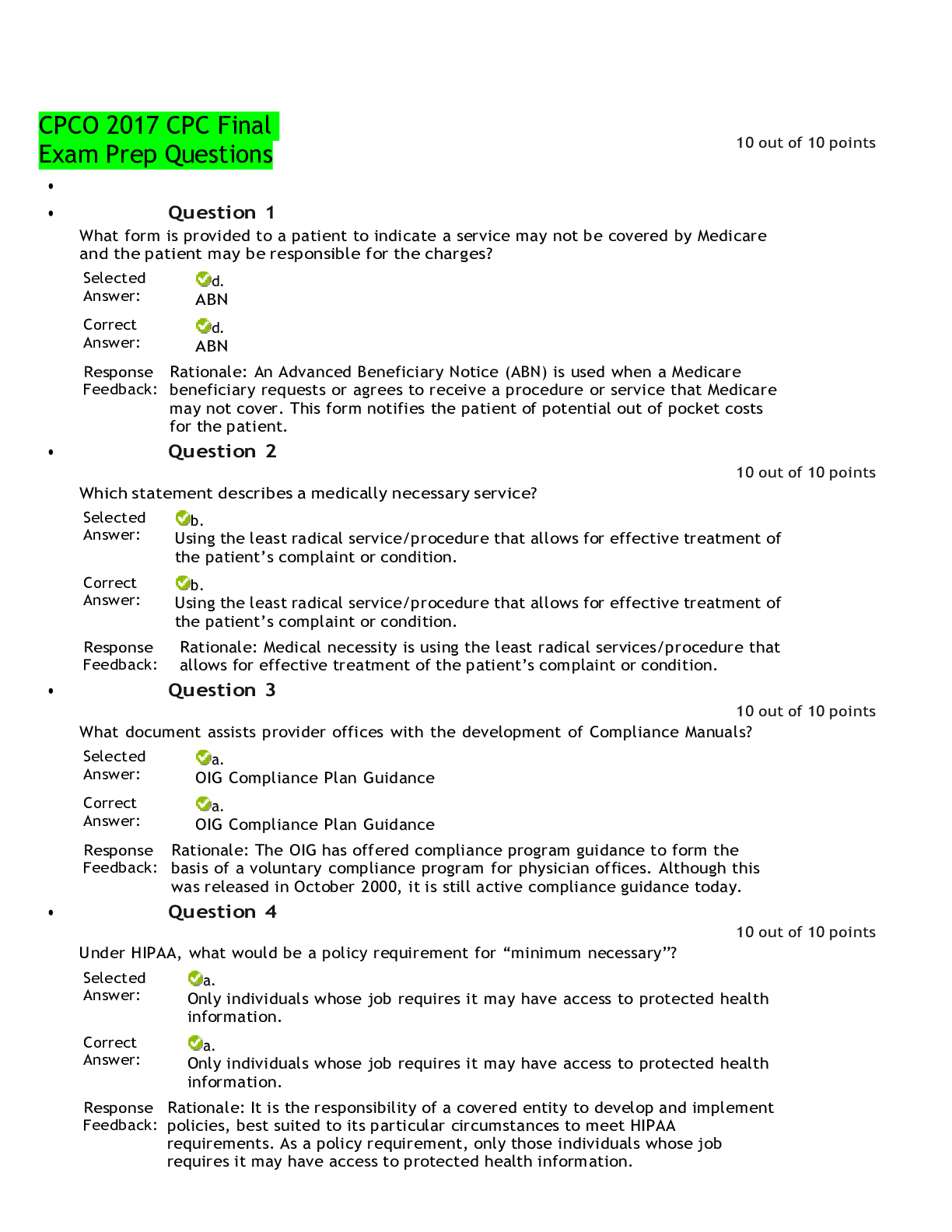*NURSING > EXAM > Kennedy-Malone Advanced Practice Nursing in the Care of Older Adults, 2e Page 1 Chapter 13 Central a (All)
Kennedy-Malone Advanced Practice Nursing in the Care of Older Adults, 2e Page 1 Chapter 13 Central and Peripheral Nervous System Disorders. QUESTIONS WITH CORRECT ANSWERS MARKED.
Document Content and Description Below
1. Neurological assessment of the older adult requires specific tools and considerations to assess patient mental status. Which of the following should be used to assess patient cognition? 1. Admini... ster SLUMS, a short dementia assessment. 2. Administer MoCA v 7.1, a 12-item assessment to detect mild neurocognitive disorders. 3. Administer testing of cranial nerve III. 4. Administer Mini-Cog, a three-word recall with clock drawing capability. 2. A clinician is performing sensory assessment on a patient presenting signs and symptoms of neurological disease. During the assessment, the clinician notices that the patient has a decreased sense of both pain and temperature. Which of the following may be affected? 1. Spinothalamic tract 2. Cranial nerve VII 3. Posterior column 4. Posterior horn 3. Gayle is a 55-year-old woman who is suspected of having a brain tumor. The clinician orders diagnostic testing for thyroid-stimulating hormone (TSH) and magnetic resonance imaging (MRI) to confirm this. Which of the following statements is true regarding a brain tumor? 1. The symptom of headache is rare. 2. A brain tumor can be a malignant or benign neoplasm. 3. The etiology of brain tumors is often known. 4. Brain tumors occur more commonly in females than males. 4. Parkinson’s disease (PD) is a chronic progressive neurodegenerative disorder resulting in the loss of dopamine-producing cells in the brain. Which part of the brain is affected with PD? 1. Substantia nigra 2. Cingulate gyrus 3. Hippocampus 4. Hypothalamus 5. Which of the following is a neurological disorder characterized by leg cramping, pulling, and tugging sensations, and may have a genetic component? 1. Radiculopathy 2. Nerve compression 3. Restless legs syndrome (RLS) 4. Sleep impairment [Show More]
Last updated: 1 year ago
Preview 1 out of pages

Buy this document to get the full access instantly
Instant Download Access after purchase
Add to cartInstant download
We Accept:

Reviews( 0 )
$8.00
Document information
Connected school, study & course
About the document
Uploaded On
Jun 25, 2021
Number of pages
Written in
Additional information
This document has been written for:
Uploaded
Jun 25, 2021
Downloads
0
Views
12

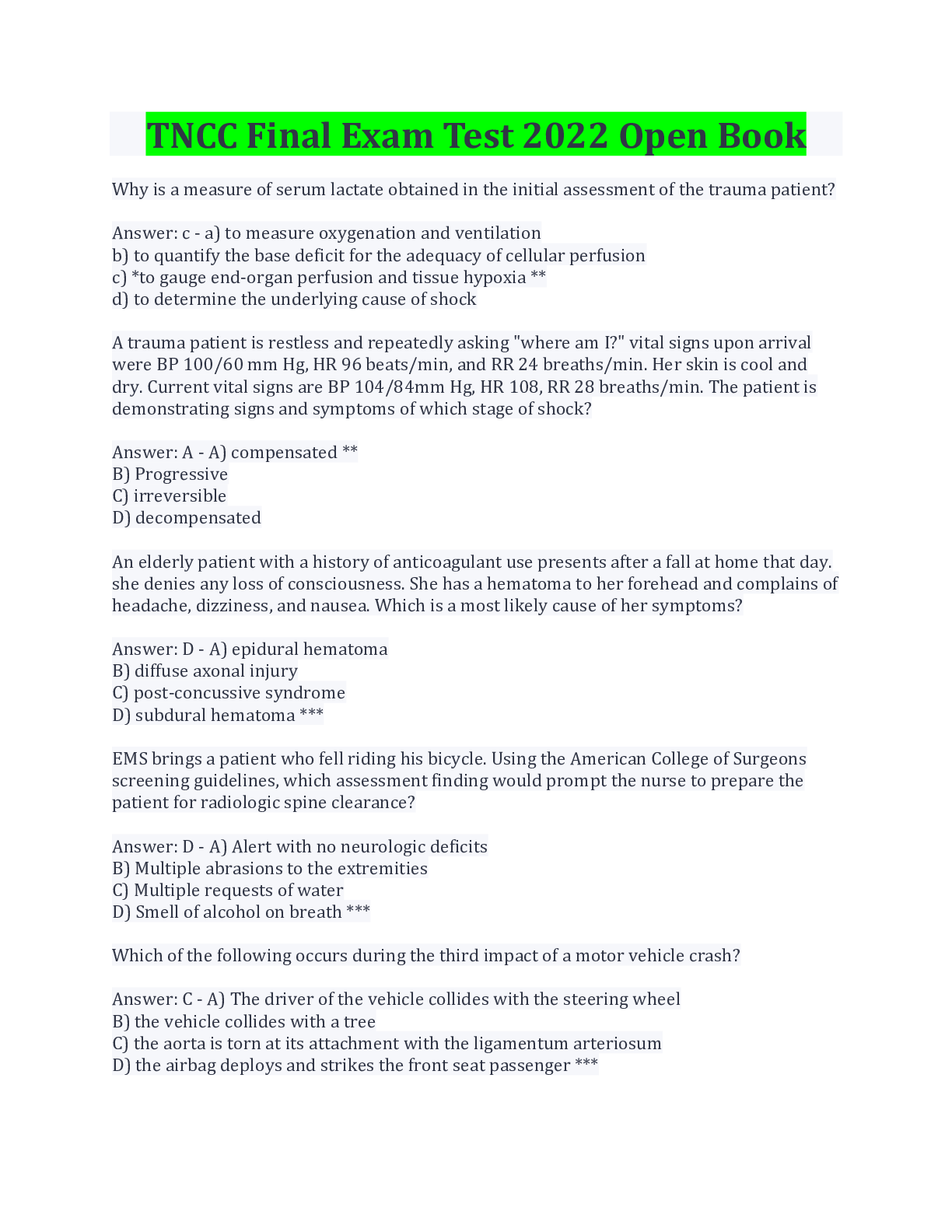
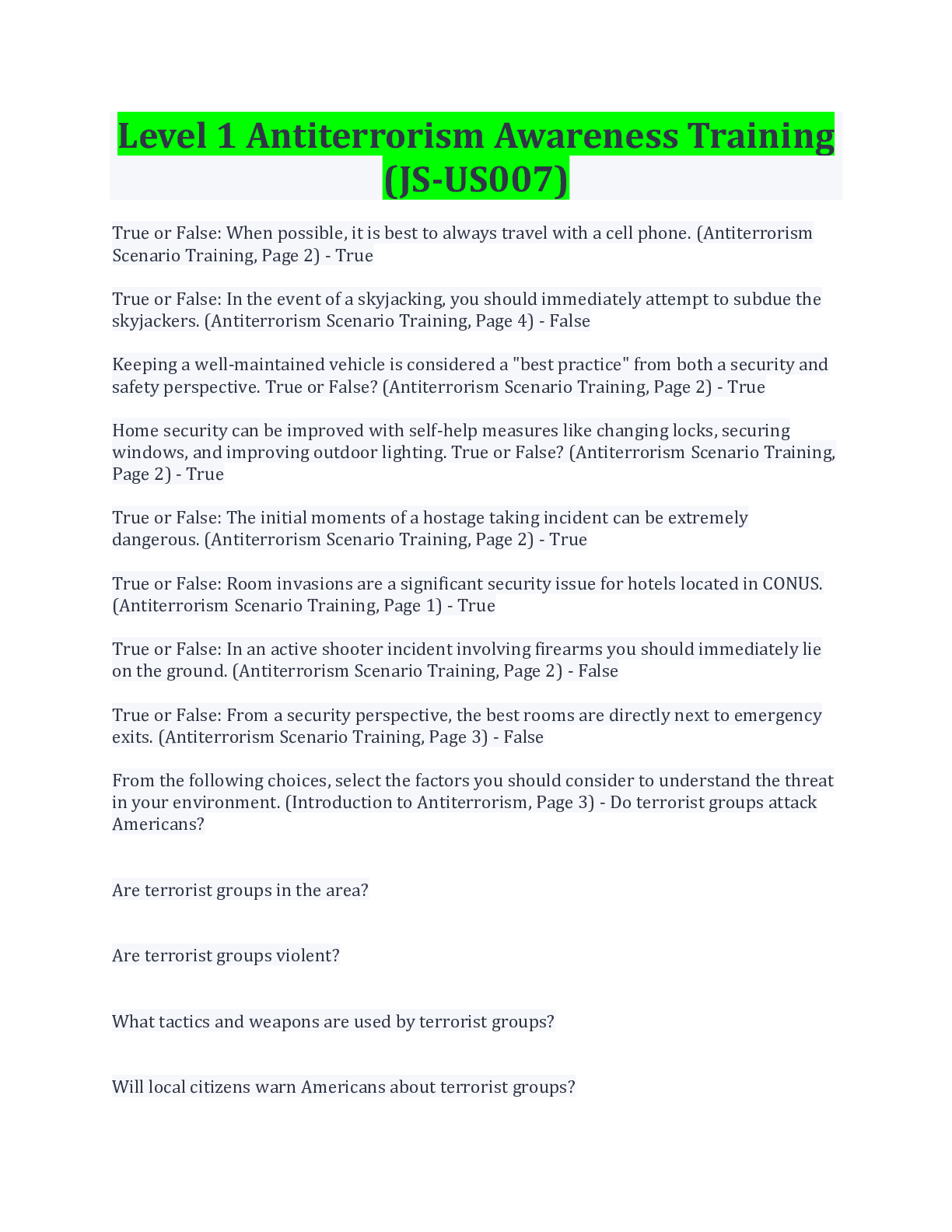
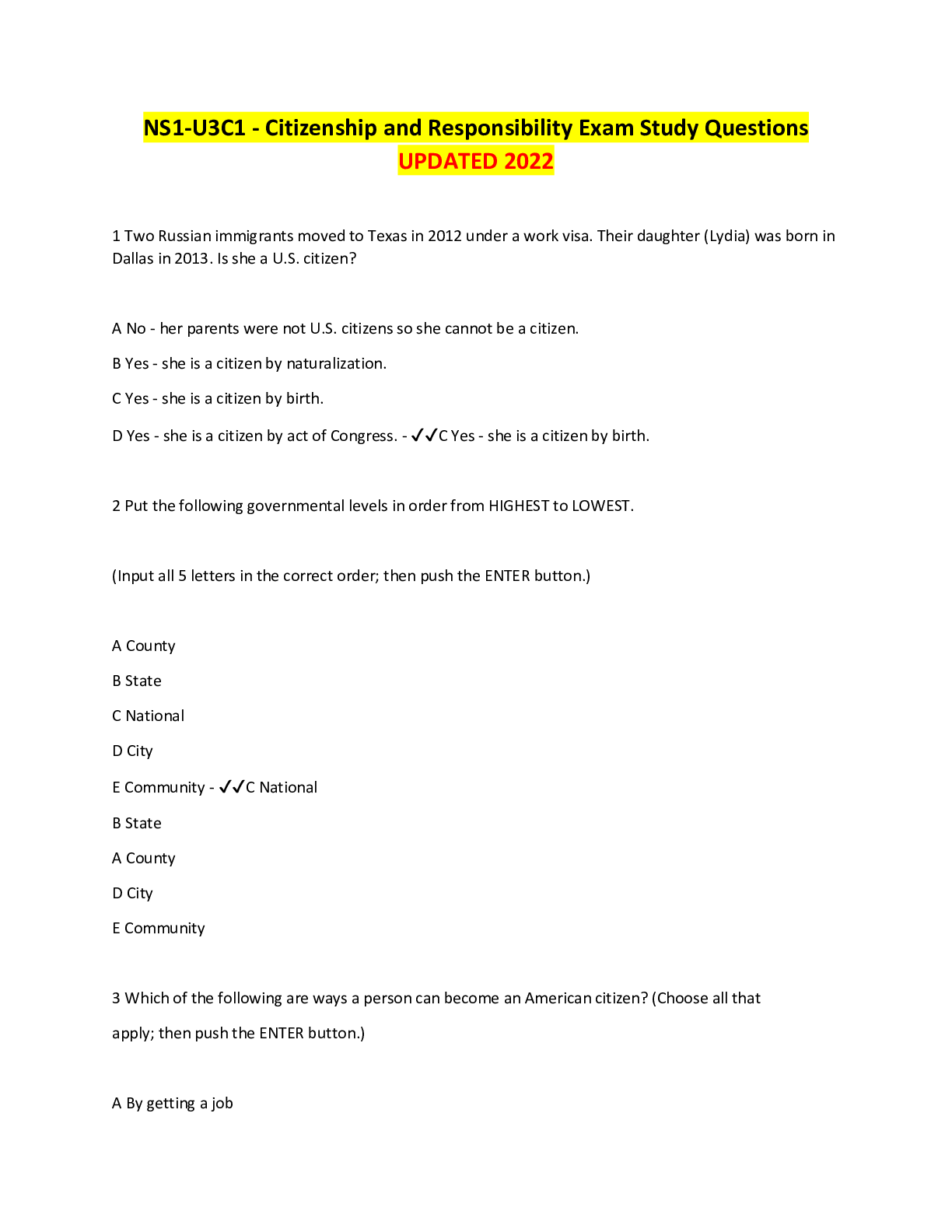

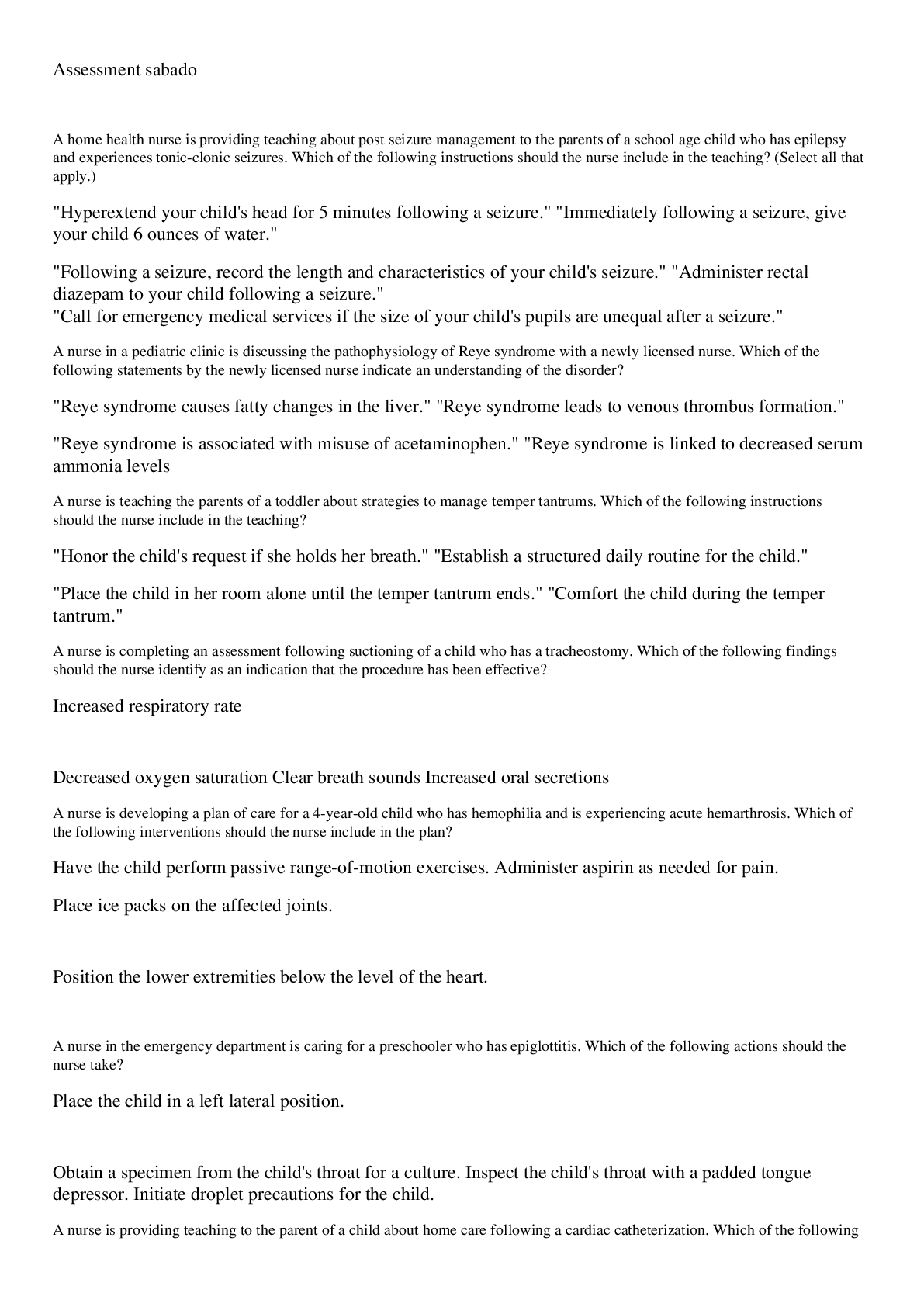
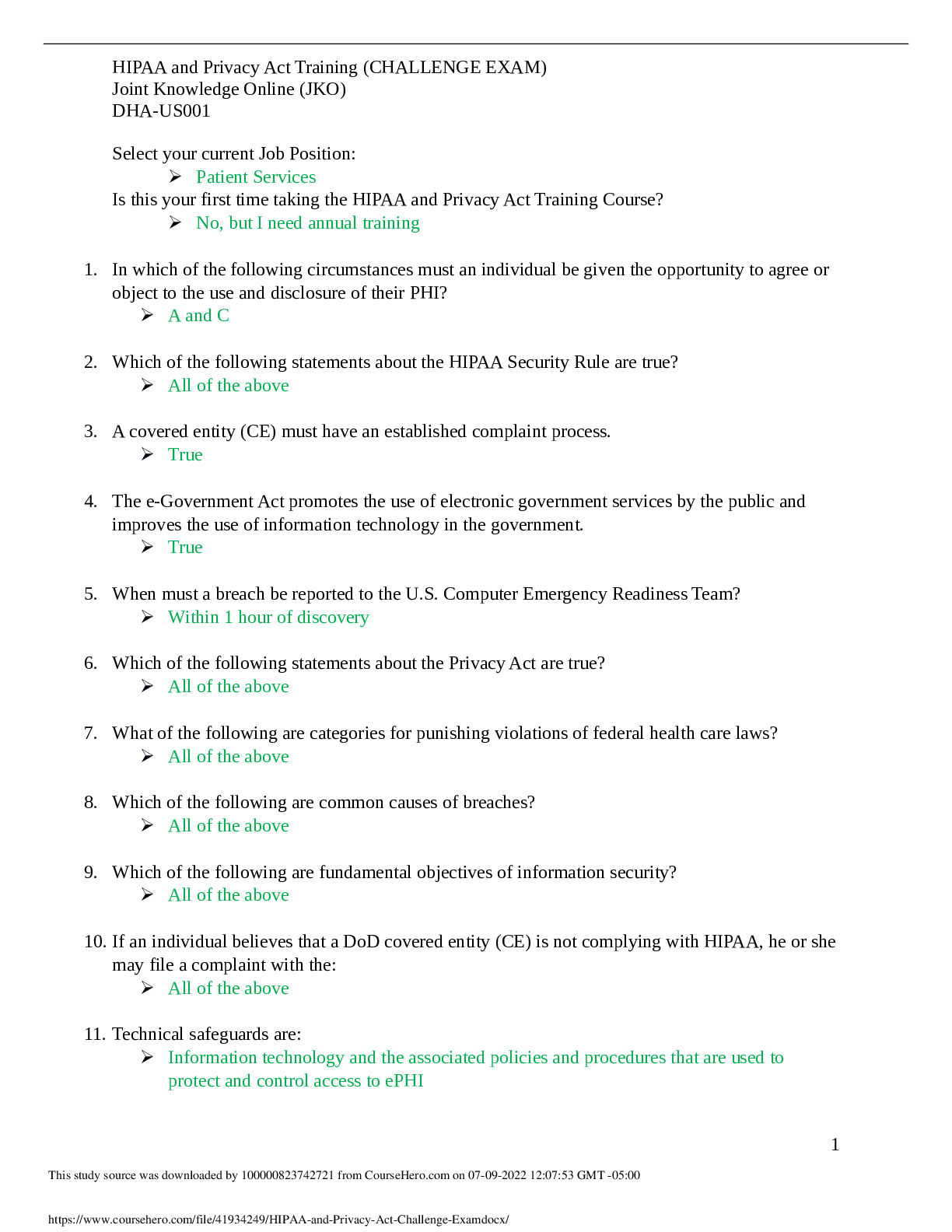
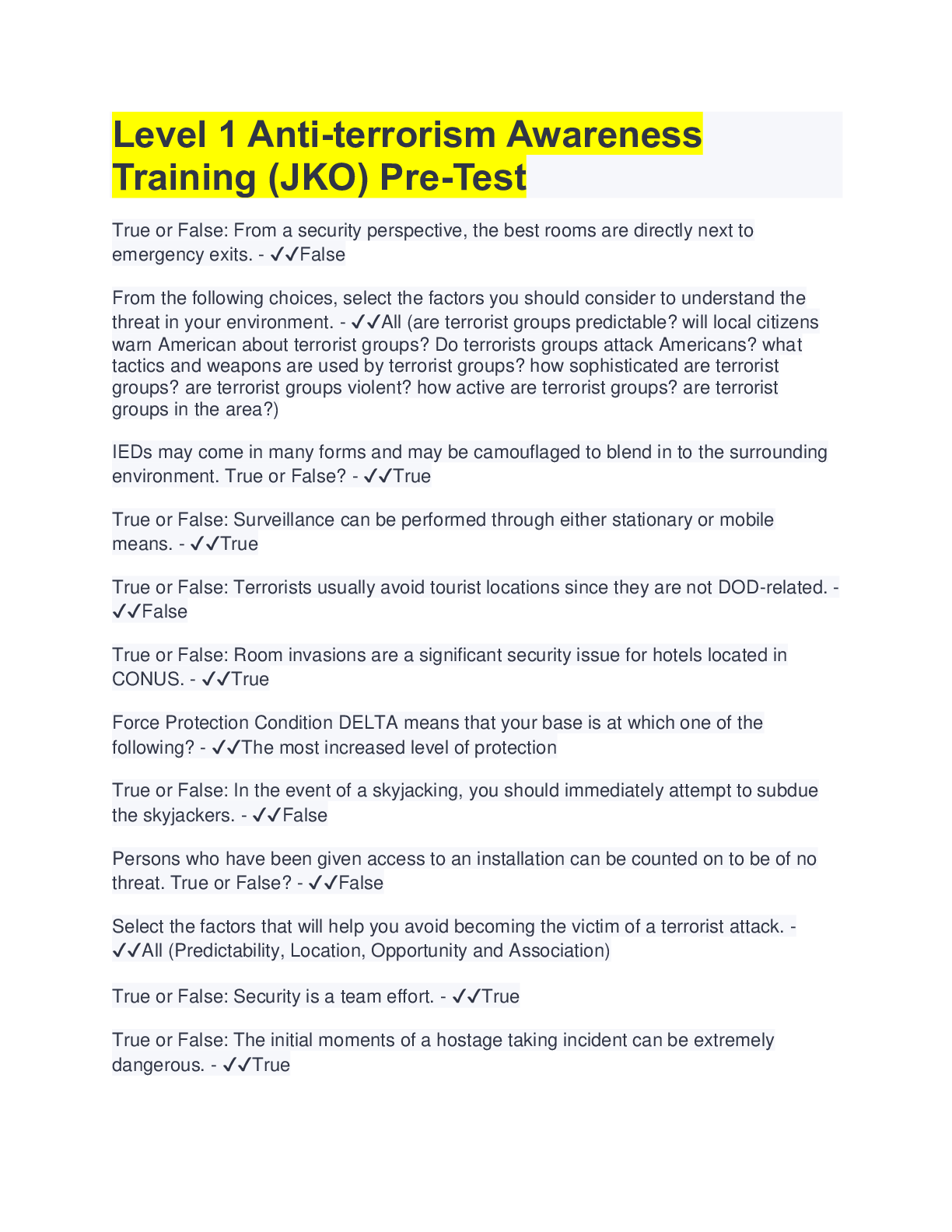
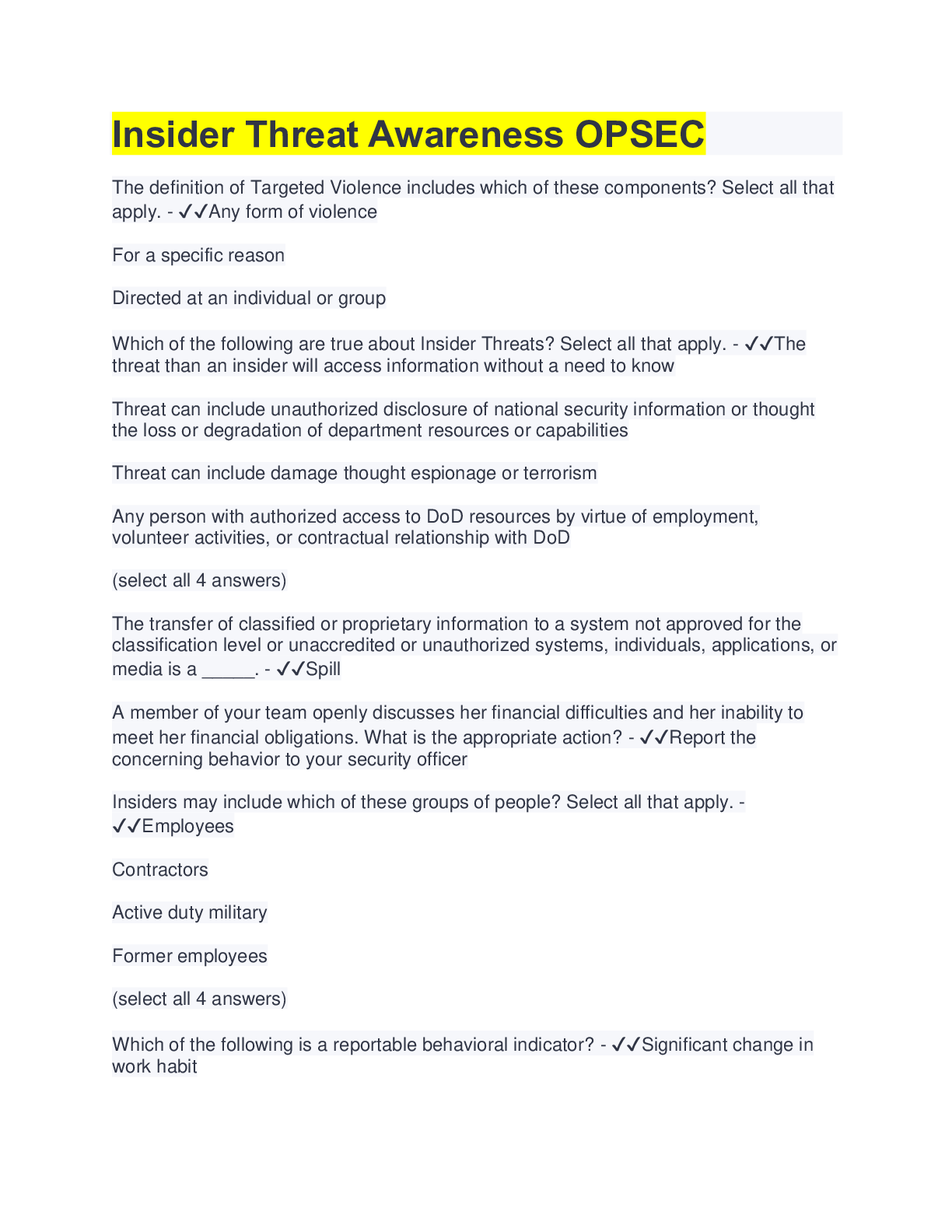
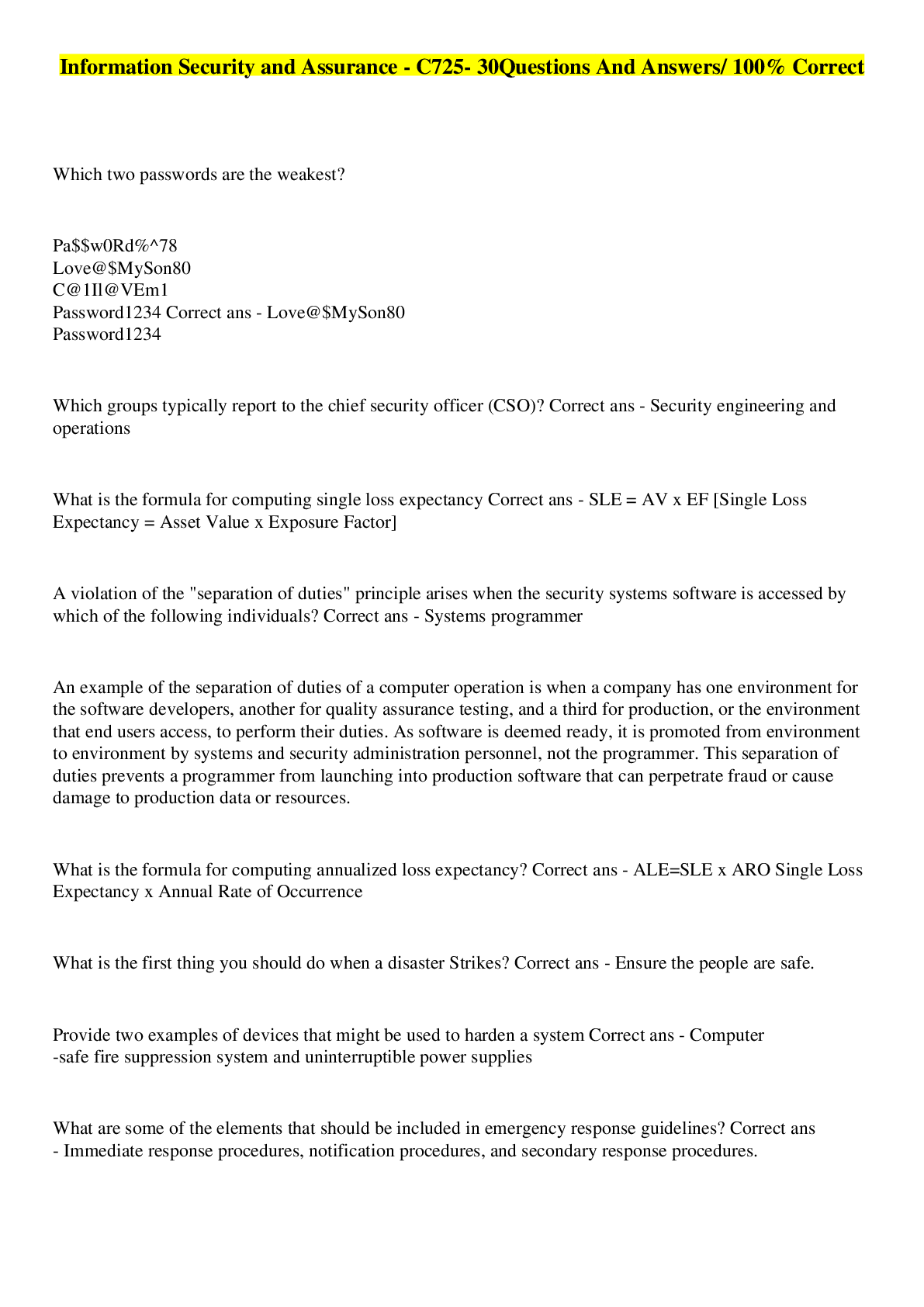
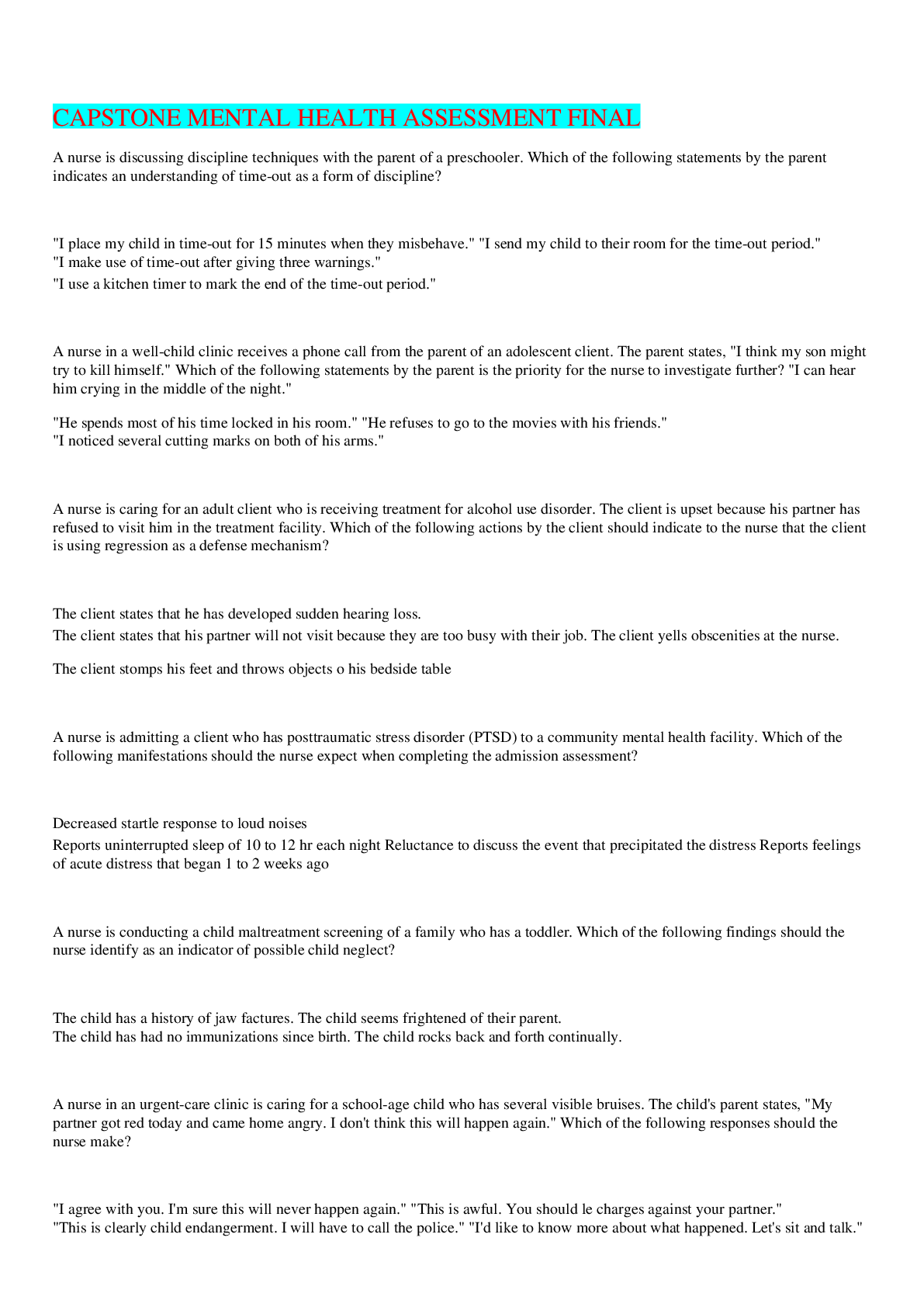

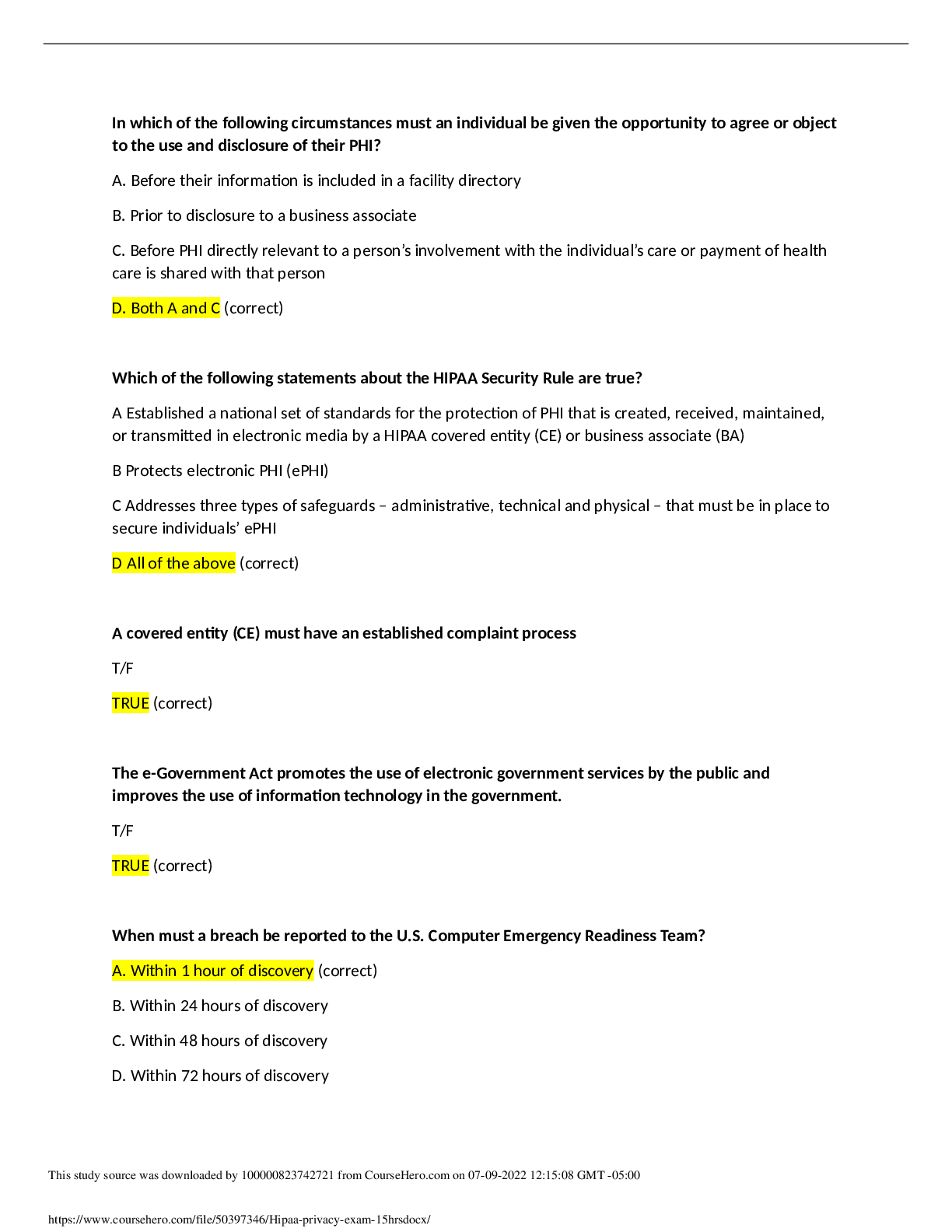
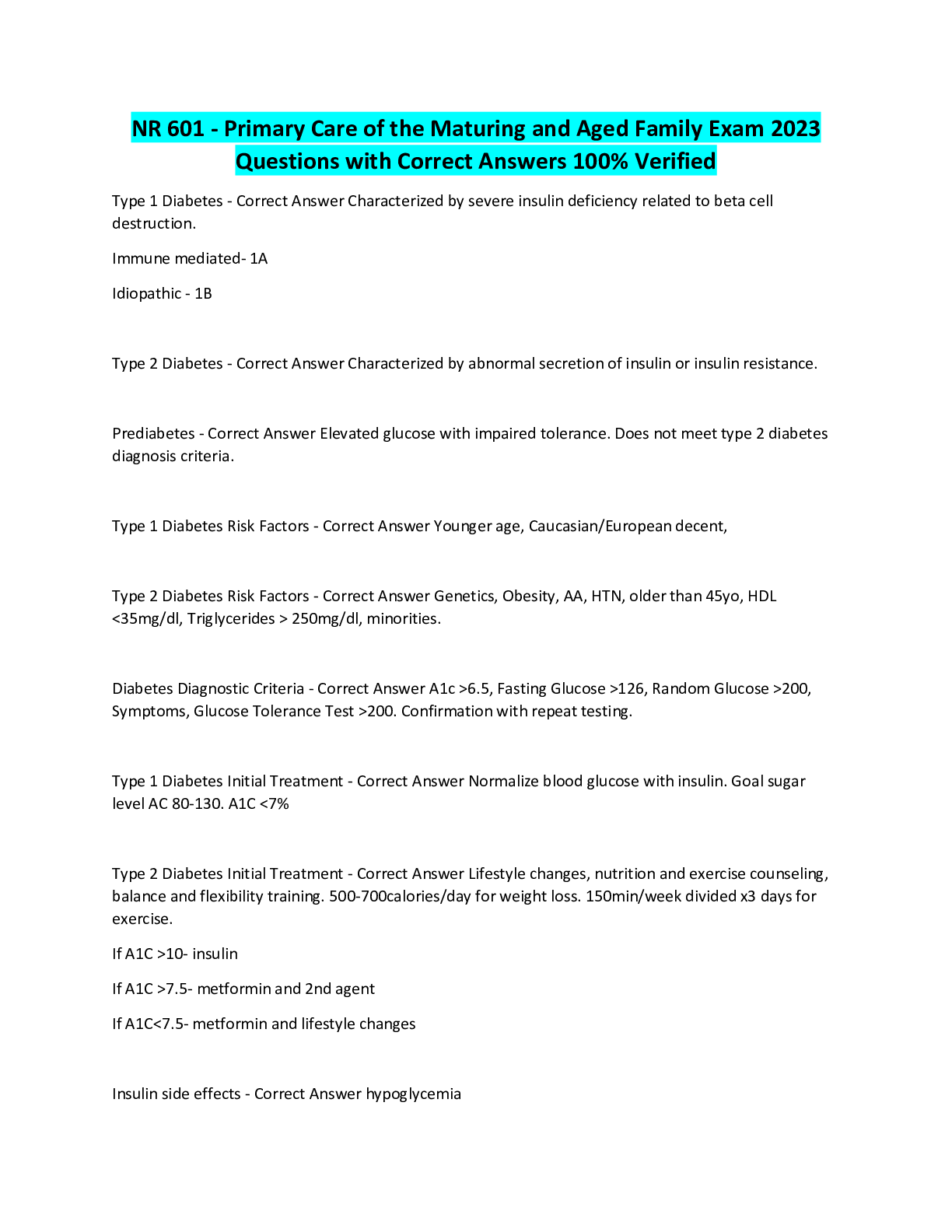

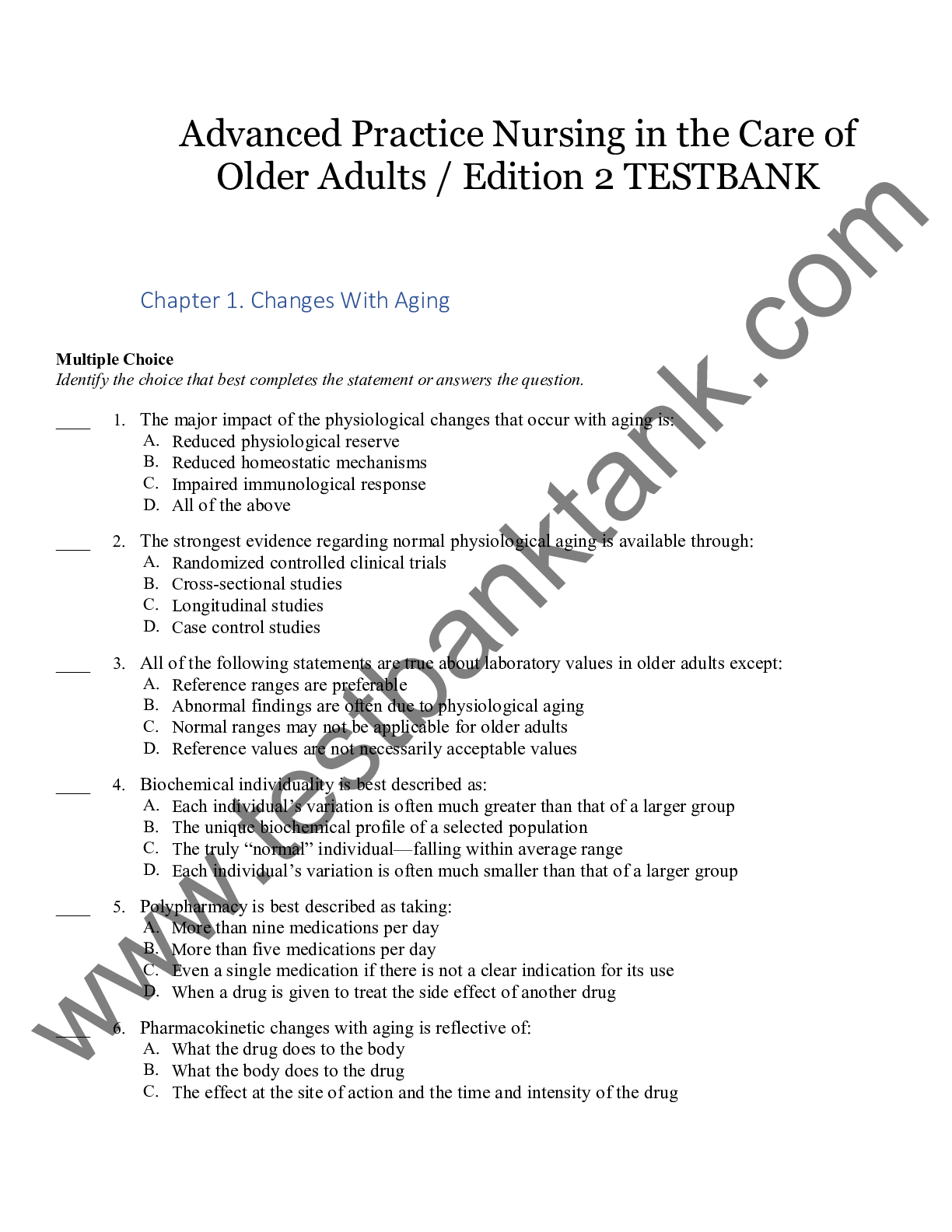
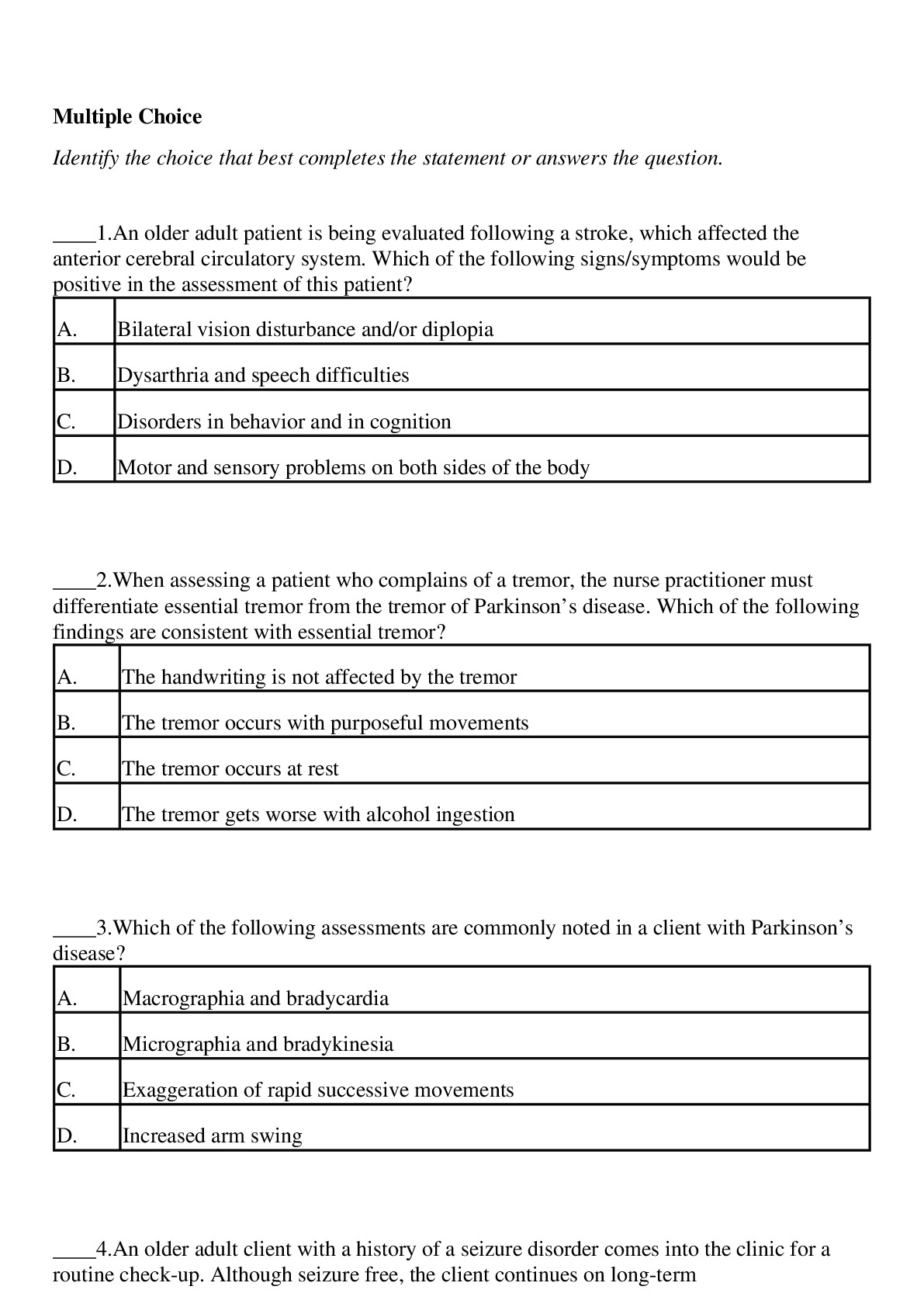

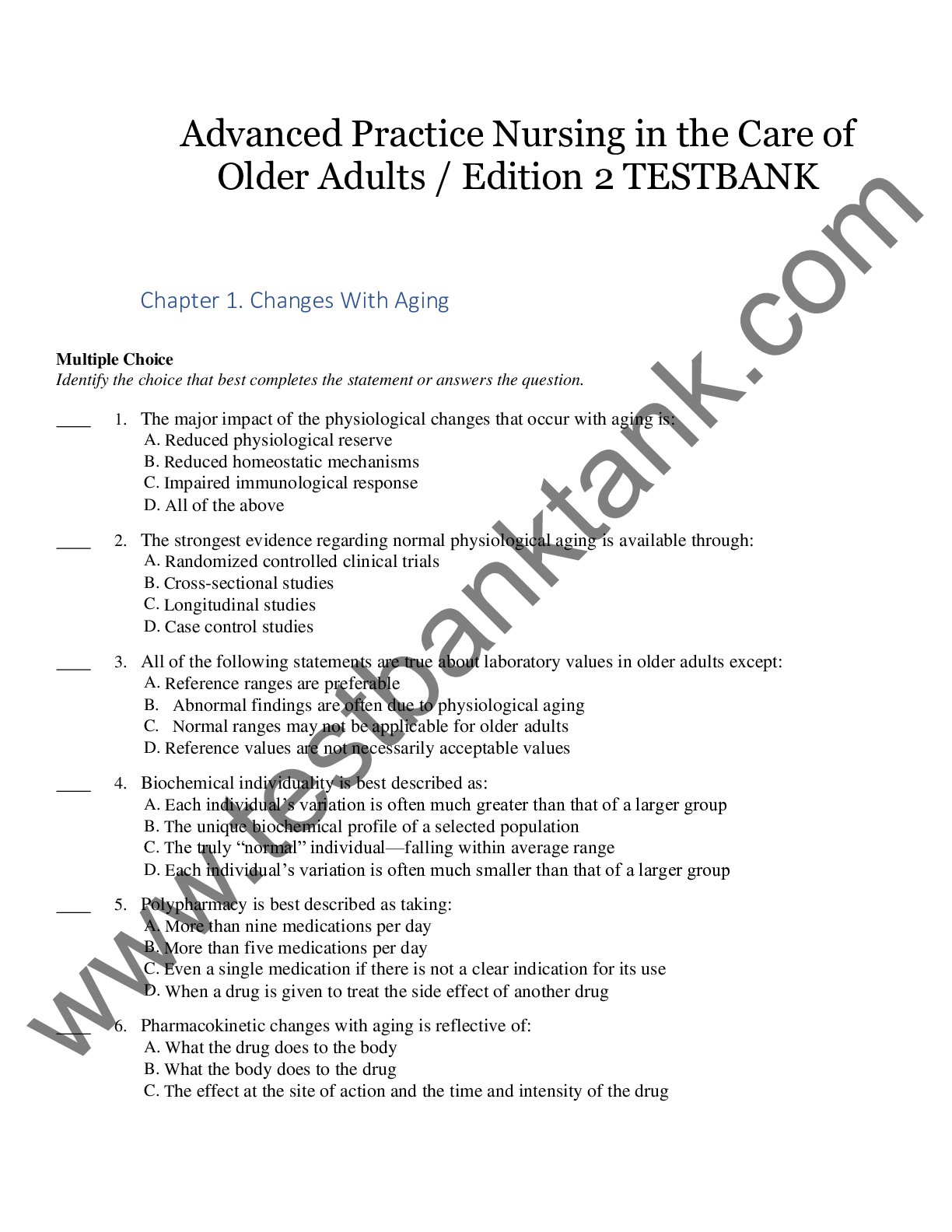
.png)
